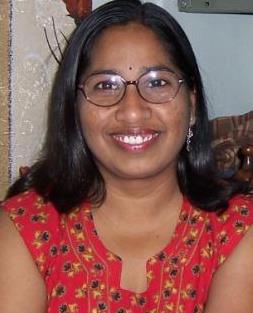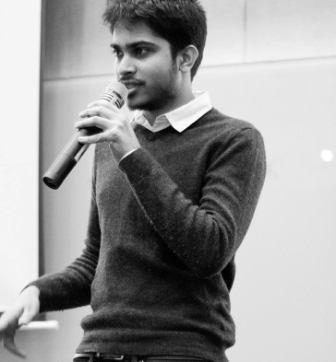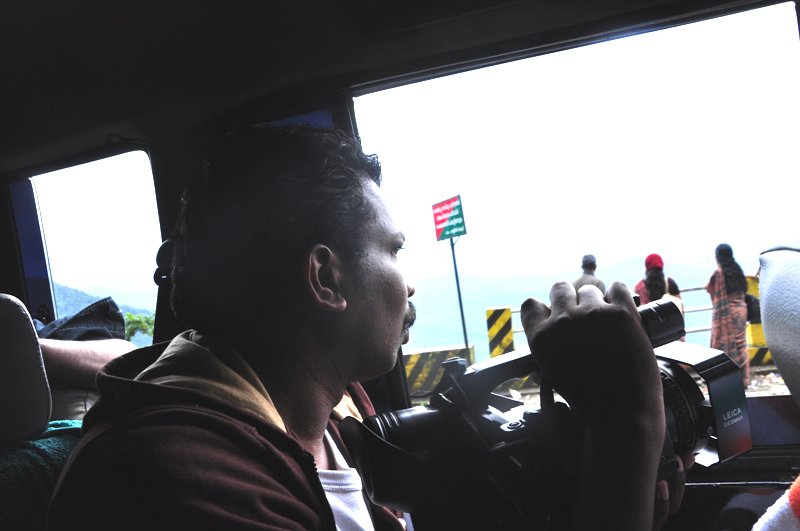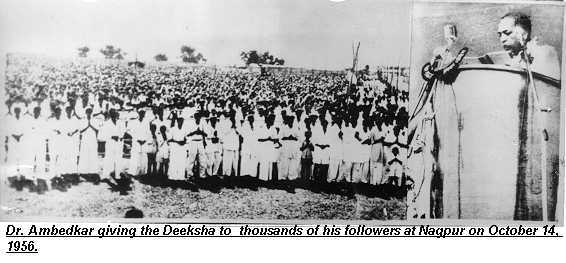Anita Bharti is a prominent poet, writer and an activist for Dalit and women’s rights since her student days. She has been in the forefront in bringing in the Dalit women’s perspective into Hindi literature. Her most recent contribution to Hindi literature was to edit and publish a pioneering collection of poetry by 65 poets, ‘Yathastithi se Takraate Hue Dalit Stree Jeewan se Judi Kavitaayein’, on the realities of Dalit women and the challenges they face. Her ‘Samakaleen Nariwaad aur Dalit Stree ka Pratirodh‘ offers a valuable appraisal and critique of contemporary feminism and the Dalit women’s stand.

Her biography of the social revolutionary Gabdu Ram Balmiki is another important work of hers. She has been honoured with several awards – which include Radhakrishan Shikshak Puraskar, Indira Gandhi Shikshak Samman, Delhi Rajya Shikshak Samman, Birsa Munda Samman and Jhalkari Bai Rashtriya Sewa Samman etc – for her contributions as a writer, teacher and activist.
In this interview, conducted during the National Dalit and Adivasi Women’s Congress held at TISS, Mumbai, on Feb 15-16, 2013, Anita Bharti talks to Gurinder Azad about the historic Congress, Dalit literature, Dalit women’s literature and struggles, and the solidarities forming between marginalized women writers, activists and academics.
This is a part of the series of interviews with many Dalit, Adivasi and Pasmanda women leaders conducted during the Congress. Round Table India and SAVARI shall regularly publish the rest of the interviews in the weeks ahead. This interview was translated from Hindi by Gouri Patwardhan.
~
{youtube}eZ2EGdYRnuk{/youtube}
Gurinder Azad: As far as I know, it is perhaps for the first time in the history of India that such a Congress has taken place and Dalit and Adivasi women as well as grassroots workers participated and played their role. How was your experience of attending the Congress?
Anita Bharti: That’s true. Ordinarily if there is a program on Dalit literature it is limited to literature alone and if it is on land rights, the focus is only on that issue. You are right about the way people have come together: activists working on land rights, writers, professionals, all participated and put across their views. This was a rare occasion where all kinds of people came together. And because of that there were discussions and debate, and that produced such energy in everyone! On the whole it was a good experience. I will say that – activists from villages to students from reputed institutions participated together in this Congress.
We rarely get such opportunities. Secondly most such meetings don’t take place from the point of view of activism. They have more of reading of papers and discussions on projects. But this program had a stamp of activism. People of different kinds and from different places connected with each other. For example, students from the Tata campus (TISS) came, there were members of faculty, people from different regions of India came. There were discussions, a (positive) atmosphere was created, and the sessions were really powerful. Really, this is a very important thing.
Gurinder Azad: You are a poet yourself and a thinker. You have been a commentator as well. You participated in the literature session in this Congress. What problems in the field of literature came up during this session?
Anita Bharti: It was a very important session. Two points emerged in the session. The first was, women’s writing in the context of India and the second was, what are the present challenges of women’s writing and how is it putting forward its issues. There is no doubt that our literature is discussed, gets discussed only in universities or in big institutions such as Sahitya Academy. Even on such platforms, in those programs only a small corner is reserved for Dalit literature and that too happens at the end of their program/s. I have often attended such programs. Last time I was there, I had raised my voice saying, ‘you give one corner to Dalits; you keep our session at the end’. Though their efforts fail when the session on Dalit literature is always ‘house full’, despite being conducted at the end.
But in this conference it was the first session. Now Dalit literature has carved its own place. People are interested in knowing what is being written. I can give you an example: of Nirmala Putul’s poems, they are very sharp. I read other women poets’ work but there is a lot of sharpness in Nirmala Putul’s poems which is less seen in other poets’ (work).
Other women poets (Savarna) are using metaphors in their poems- like Draupadi and Seeta – they haven’t come out of that mode yet. Dalit- Adivasi poets don’t use such metaphors in their poetry. In fact they speak against them. Their literatures, their fight- like their poems or stories dealing with domestic and social issues or economic exploitation – are different. This is what I think.
This is the reason why when people start doing comparative analyses of Dalit-Adivasi literature, Dalit literature is much appreciated. This taste didn’t get created in a vacuum. Dalit literature is written so well and it’s so beautiful that people are unable to put it down.
Though lies are spread, particularly regarding women, that there is falseness in Dalit literature, it doesn’t have strength. The literature that’s coming out of different regions; be it Telugu or Marathi or from some other region, it is very powerful. It has its own readership, its own admirers. Another important aspect is that the Dalit woman writer, writing while facing different kinds of opposition, is clearly coming to the fore. Though they have very few opportunities of getting published.
For example if you look at the women’s representation in any mainstream newspaper, you will find that there are ten non Dalit women and one Dalit woman. And even that is to save themselves from the accusation of ‘why isn’t a Dalit woman writing here’, she finds a token space. Secondly, it is a significant that Dalit writers become known to people after a long struggle.
But writers from non-Dalit communities make space for themselves everywhere after writing a single story. Just a single story is published in a journal and overnight they are talked about and become mainstream writers. So I or we feel that those Dalit women who are writing are doing it on their own strength. While others write by climbing on someone else’s shoulder. Dalit and Adivasi women writers have created their own place. They have marched ahead with confidence.
Gurinder Azad: You are saying that Dalit- Adivasi writers are not getting published. Is that why you edited the book titled ‘Yathastithi se Takraate Hue Dalit Stree Jeewan se Judi Kavitaayein’ and before that a book of short stories? …So that their voice reaches everyone?
Anita Bharti: There were three-four reasons for working on these books. Firstly, our Dalit-Adivasi writers aren’t finding opportunities anywhere. The second reason was, to make it possible for our young generation to have equal space with the other (elite) young generation. The third point is that we want to break the caste system through literature. Because there are more fortresses in literature. Literary journals have become fortresses. They are run by individuals of different castes. They dominate there. They publish writers they like. There is groupism.
Another reason was that there is no conversation on Dalit woman in a proper way. Neither about their literature, nor about their issues or their struggles. So we thought that we would get poems and stories written, focusing on Dalit and Adivasi women. There was one more reason; for last seven-eight years there have been many accusations that Dalit women lack in character. They mix with other men. They are promiscuous. They have children with other men and make their Dalit husbands look after them.
It is surprising that such baseless stuff is published by mainstream newspapers with prominence; and these people claim to be representing a particular community. It is a very strange approach that that when women in a community step out to earn, endure exploitation, get beaten up at home and fall prey to all kinds of bad customs outside their homes as well; they are accused in this manner and the whole Dalit community stands accused. Anyhow, we tried to bring out these two books in opposition to this.
The first issue (short fiction) had stories by twenty two writers. Many people had a question: what do you think of Dalit literature that non Dalit writers are writing on Dalits. But we believed that Dalit writing is the standard. But we can’t stop those who want to write. If someone wants to connect with the issues and write, they are welcome. This is how we brought out the first issue. It was very successful. People liked it very much.
The first edition was over and it was included in the syllabus in SNDT College. The second issue is now out of the press and it has sixty-five poets. There are known poets in it like- Alpana Mishra, Nirmala Putul, Anuj Lugun, Bharat Bhushan Agarwal and others. The enthusiasm with which Dalit youth and poets have participated, saying, we are connected with the issue – it is something to feel happy about. It means something that a book of poetry of sixty-five poets has appeared within a period of six months. Our first issue came out during the last book fair and the second one has appeared during the next book fair. Everybody is excited.
But the literary journals haven’t picked them up for reviewing; something that happens routinely with newly published books. Our book was nowhere on the map. We were accused of creating confusion in the Dalit literary sphere. Our writers- because we have two editors- Bajrang Bihari Tiwari and me, so because of Bajrang, Dalits don’t want to own it as theirs. And non-Dalits don’t want to own it because of me. This book hasn’t been mentioned anywhere. But it was reviewed in many journals and people appreciated it a lot.
Gurinder Azad: Your book of poetry that you have edited not only criticizes the brahminical order but also speaks about land and water issues and about urban Dalits. There are quite a few issues in it. Are you happy with it or are there more things that you feel need to be spoken about?
Anita Bharti: Dalit literature has so far talked about caste violence. And a lot has been covered under it. It was necessary that what we have so far suffered on account of caste should be reflected in literature. But other issues like water and land issue or other communities like fishermen or de-notified tribes such as Nats, I mean a large section of Dalit Adivasi population didn’t have space in it. And it is very essential that it is there. If people are being exploited socially and economically then apart from that violence, we need to be inclusive and expand our circle.
Let us take the example of this Congress in which there was a question from members of de-notified tribes about their position. Are we human beings or not? So we are saying that those Dalit castes that are totally suppressed, they too aren’t represented or they are as good as absent. Literature will represent them and it should. It has been ten-twenty years since we started to write about our sufferings. But now this fight will be with big issues and concerns taking everyone along only then will literature acquire a meaningful character.
Gurinder Azad: One significant aspect is that it is a period of friction in literature. The established writers have already produced literary works; they are compelled to take Dalits along. They are compelled to talk about Dalit issues. On the other hand they are calling our literature reactionary and weeping literature. Will we be able to give a concrete answer to them?
Anita Bharti: There are two types of people among this group: those who reject us, people like Namwar Singh are among them. There are more such people. There are people of other kind as well. Those who are well wishers of Dalit literature and they want it to flourish. They are connected with it. There was a big debate over this and we are now clear about some issues; such as, who can write Dalit literature. For example, there was the issue of authenticity. Or what is aesthetic understanding? What is Brahminical aesthetic and Dalit aesthetic? There was a lot of discussion. And we reached a conclusion too, that authentic literature will be written by a Dalit writer.
Our aesthetic norms are very different from theirs. Be it about language or about physical beauty. For us labour is beautiful if fair skin is beautiful for them. Our standards are different, our language is different. Despite all these things happening, Dalit literature has been established. It has its own power. It’s not going to stop. Its language is sharp. It’s a matter of insecurity for them that they have to move away from the place they have captured; because Dalits have arrived.
~~~










